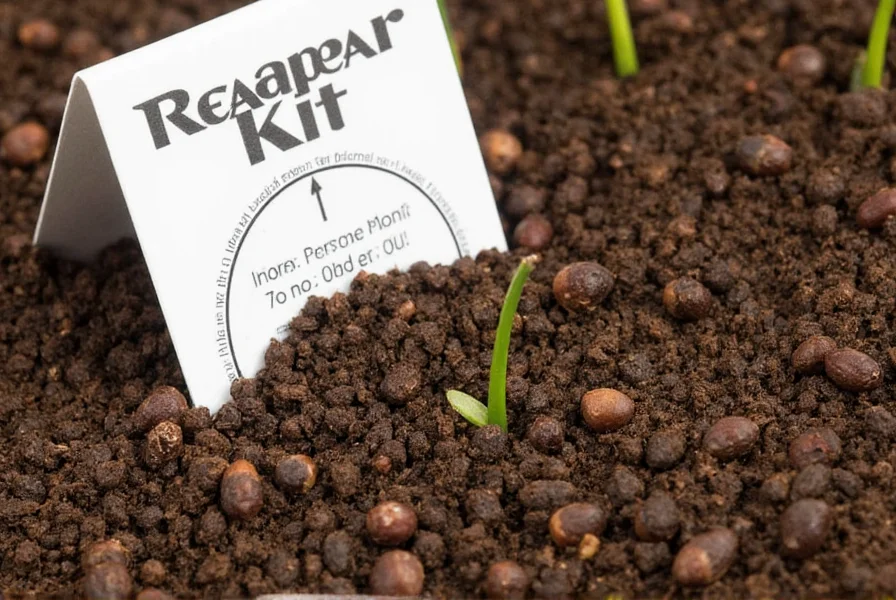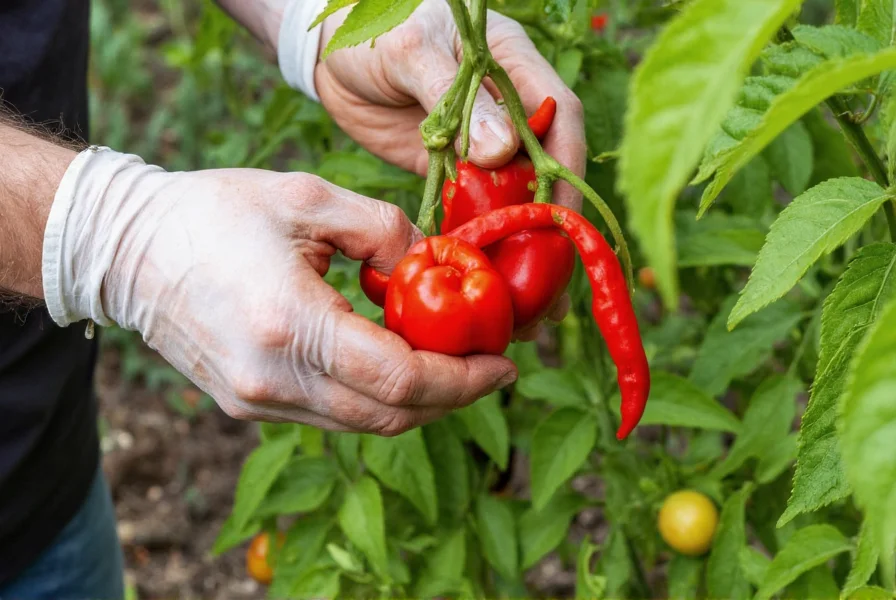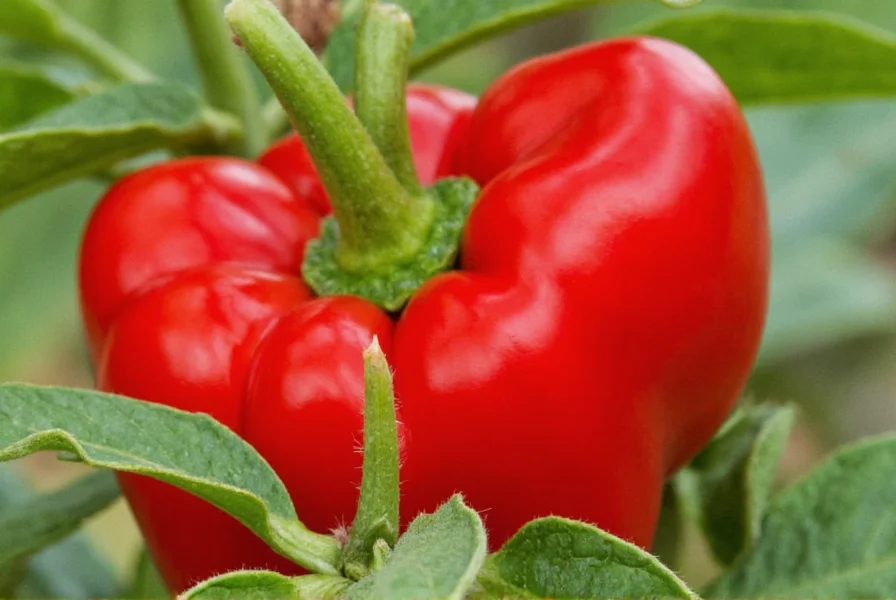Reaper pepper seeds have captivated gardeners and chili enthusiasts worldwide with their extraordinary heat and distinctive flavor profile. As one of the hottest peppers ever recorded, understanding how to successfully cultivate these fiery plants requires specific knowledge that goes beyond standard pepper growing techniques. This comprehensive guide provides evidence-based information for both novice and experienced growers seeking to add these remarkable peppers to their garden.
Understanding Reaper Pepper Characteristics
The Carolina Reaper, officially recognized by Guinness World Records as the world's hottest pepper from 2013-2018, delivers an intense heat experience that demands respect. Developed by South Carolina breeder Ed Currie, this pepper results from crossing a Pakistani Naga pepper with a Red Habanero.
When considering how to grow reaper pepper seeds, understanding their unique characteristics is essential:
| Characteristic | Details |
|---|---|
| Scoville Heat Units | 1,400,000-2,200,000 SHU (approximately 275 times hotter than a jalapeño) |
| Mature Plant Height | 24-36 inches |
| Days to Maturity | 90-100 days from transplant |
| Preferred Climate | Warm temperatures (70-90°F), high humidity |
| Soil pH Requirement | 6.0-6.8 (slightly acidic) |
Optimal Growing Conditions for Reaper Pepper Seeds
Successful growing reaper peppers from seed begins with creating the ideal environment. Unlike milder pepper varieties, Reapers have specific requirements that directly impact germination success and plant health.
Temperature Requirements
Reaper pepper seeds need consistent warmth for proper germination. The ideal soil temperature ranges between 80-90°F (27-32°C). Many growers achieve better results using a heat mat specifically designed for seed starting. Temperatures below 70°F significantly reduce germination rates and slow seedling development.
Soil and Container Selection
Choose well-draining soil with good aeration. A mix of:
- 60% high-quality potting soil
- 30% perlite or vermiculite
- 10% compost
provides the ideal balance for reaper pepper germination tips. Small containers (2-3 inches in diameter) work best for initial seed starting, allowing for easier transplanting later.

Step-by-Step Planting Guide
Follow these evidence-based steps for successful reaper pepper plant care guide implementation:
Seed Preparation
Soak seeds in room-temperature water for 2-4 hours before planting. This softens the seed coat and may improve germination rates. Some growers use hydrogen peroxide (1 part peroxide to 10 parts water) for 5 minutes to help prevent fungal issues.
Planting Depth and Spacing
Plant seeds 1/4 inch deep in moist soil. Maintain consistent moisture without waterlogging. Cover containers with plastic wrap or humidity domes to maintain moisture levels during germination.
Germination Timeline
Expect germination between 14-42 days, with most seeds sprouting around 21 days. Patience proves essential when working with reaper pepper scoville rating varieties, as their germination often takes longer than milder peppers.
Transplanting and Ongoing Care
Transplant seedlings when they develop their second set of true leaves and outdoor temperatures remain consistently above 60°F at night. Harden off plants gradually over 7-10 days before permanent outdoor placement.
Nutrient Requirements
Reaper peppers benefit from balanced fertilization:
- Early growth: Higher nitrogen formula (10-5-5)
- Flowering stage: Lower nitrogen, higher phosphorus (5-10-10)
- Fruit development: Balanced formula with added calcium
Watering Practices
Maintain consistent moisture without waterlogging. Water deeply 2-3 times weekly rather than frequent shallow watering. Mulching helps maintain soil moisture and temperature stability - crucial for reaper pepper soil requirements.
Harvesting and Post-Harvest Handling
Reaper peppers typically mature from green to bright red over 90-100 days. Harvest when peppers reach full color and develop their characteristic bumpy texture. Always wear nitrile gloves when harvesting due to the extreme capsaicin concentration.

Safe Handling Practices
The extreme heat of Reaper peppers requires careful handling:
- Wear gloves and eye protection when harvesting
- Avoid touching face or sensitive areas
- Wash hands thoroughly with soap after handling
- Clean tools with soapy water immediately after use
Troubleshooting Common Growing Issues
Even with proper care, growers may encounter challenges with reaper pepper plant troubleshooting. Understanding these common issues helps maintain plant health:
Slow Germination
If seeds haven't sprouted after 4 weeks:
- Check soil temperature (aim for 85°F)
- Ensure consistent moisture (not soggy)
- Consider seed viability (pepper seeds lose viability after 2-3 years)
Blossom Drop
When flowers form but drop without fruiting:
- Temperature extremes (above 90°F or below 60°F)
- Inconsistent watering
- Nutrient imbalance (excess nitrogen)
- Poor pollination (try gentle hand pollination)
Culinary Applications and Safety
Due to their extreme heat level, reaper pepper harvesting techniques must prioritize safety. Never consume raw Reapers without proper preparation. Start with tiny amounts when incorporating into recipes, and always have dairy products available to counteract excessive heat.
Popular culinary uses include:
- Hot sauces (diluted significantly)
- Infused oils (use caution with botulism risk)
- Specialty spice blends (in minute quantities)
- Preserved peppers (fermentation reduces heat slightly)
Storage and Preservation Methods
Preserve your harvest effectively with these methods:
- Drying: Use a food dehydrator at 135°F for 8-12 hours
- Freezing: Chop peppers and freeze in oil for cooking
- Fermentation: Creates flavorful hot sauces with reduced heat
- Powdering: Grind dried peppers into powder (use extreme caution)
How long do reaper pepper seeds take to germinate?
Reaper pepper seeds typically take 2-6 weeks to germinate under optimal conditions (80-90°F soil temperature). Germination rates improve significantly with consistent bottom heat. Patience is essential as these seeds often germinate more slowly than milder pepper varieties.
What is the ideal soil pH for growing reaper peppers?
Reaper peppers thrive in slightly acidic soil with a pH between 6.0 and 6.8. Maintaining proper soil pH ensures optimal nutrient availability. Test your soil before planting and amend as necessary using sulfur to lower pH or lime to raise it.
How hot are reaper peppers compared to other varieties?
Carolina Reaper peppers measure between 1.4-2.2 million Scoville Heat Units (SHU), making them approximately 275 times hotter than a jalapeño (5,000-8,000 SHU) and about 6 times hotter than a habanero (100,000-350,000 SHU). Their heat is extremely intense and requires careful handling.
Can I grow reaper peppers indoors successfully?
Yes, you can grow reaper peppers indoors with proper lighting (minimum 14 hours of strong light daily), consistent temperatures between 70-90°F, and adequate container size (at least 5 gallons). Indoor growing requires careful attention to pollination, as natural pollinators won't be present.
What safety precautions should I take when handling reaper peppers?
Always wear nitrile gloves and eye protection when handling reaper peppers. Avoid touching your face, and wash hands thoroughly with soap after handling. Work in a well-ventilated area as capsaicin can become airborne. Keep dairy products nearby to counteract accidental exposure, as water won't help alleviate the burning sensation.











 浙公网安备
33010002000092号
浙公网安备
33010002000092号 浙B2-20120091-4
浙B2-20120091-4